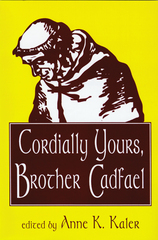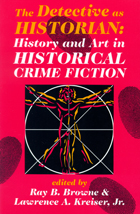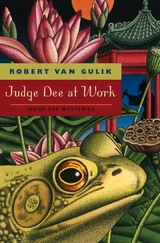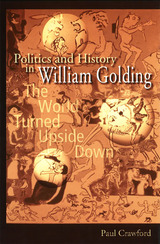6 books about Historical fiction, English

Africanfuturism
African Imaginings of Other Times, Spaces, and Worlds
Kimberly Cleveland
Ohio University Press, 2024
In the past few decades, Western studies of Afrofuturism have grown to encompass examples deriving from multiple sites across the diaspora, as well as from the African continent. However, an increasing number of Africans and Africanists have voiced their concerns about grouping African work under the larger umbrella of Afrofuturism without distinction and have emphasized the need to investigate the differences between African American and African production. This book offers an introduction to Africanfuturism—a body of African speculative works that is distinguishable from, albeit related to, US-based Afrofuturism. Kimberly Cleveland uses Africanfuturism as an intellectual lens to explore works that embody combinations of possibilities, challenges, and concerns related to what lies ahead for the continent and its peoples. This book highlights twenty-first-century film, video, painting, sculpture, photography, tapestry, novels, short stories, comic books, song lyrics, and architecture by African creatives of different nationalities, races, ethnicities, genders, and generations. Cleveland analyzes the ideas and opinions of African intellectuals and cultural producers, combining interviews with historical research. Each chapter features one of Africanfuturism’s most common themes: space and time exploration, creation of worlds, technology and the digital divide, Sankofa and remix, and mythmaking. This investigation of Africanfuturism is geared toward students, academics, and Afrofuturism enthusiasts, and its included discussion questions facilitate classroom use. The book illuminates Africa’s place in the worlds of science fiction and fantasy and how Africanfuturist work builds on the continent’s own traditions of speculative expression. Because these creative works disrupt the history of Western domination in Africa, Cleveland also connects Africanfuturism with the process of decolonization and addresses specific ways in which African creatives (re)center indigenous beliefs, strategies, and approaches in their production. Africanfuturism encourages both imaginative possibilities and potential real-world outcomes, highlighting the rich contributions of Africans to the vision of future worlds.
[more]

Cordially Yours, Brother Cadfael
Edited by Anne K. Kaler
University of Wisconsin Press, 1998
Detective, monk, father, herbalist, Crusader, sailor, Celt, friend—author Ellis Peters bestows all these attributes on her twelfth-century Benedictine monk-detective Brother Cadfael. As a detective, Cadfael uses his analytic mind to solve crimes and administer justice. As a man of God, he also dispenses mercy along with his famous cordials.
Why, essays ask, is a cloistered monk solving murders? How can an author combine a valid detective and an effective healer?
Why, essays ask, is a cloistered monk solving murders? How can an author combine a valid detective and an effective healer?
[more]

The Detective as Historian
History and Art in Historical Crime Fiction
Edited by Ray B. Browne and Lawrence A. Kreiser, Jr.; Preface by Robin W. Winks
University of Wisconsin Press
Readers of detective stories are turning more toward historical crime fiction to learn both what everyday life was like in past societies and how society coped with those who broke the laws and restrictions of the times. The crime fiction treated here ranges from ancient Egypt through classical Greece and Rome; from medieval and renaissance China and Europe through nineteenth-century England and America.
Topics include: Ellis Peter’s Brother Cadfael; Umberto Eco’s Name of the Rose; Susanna Gregory’s Doctor Matthew Bartholomew; Peter Heck’s Mark Twain as detective; Anne Perry and her Victorian-era world; Caleb Carr’s works; and Elizabeth Peter’s Egyptologist-adventurer tales.
Topics include: Ellis Peter’s Brother Cadfael; Umberto Eco’s Name of the Rose; Susanna Gregory’s Doctor Matthew Bartholomew; Peter Heck’s Mark Twain as detective; Anne Perry and her Victorian-era world; Caleb Carr’s works; and Elizabeth Peter’s Egyptologist-adventurer tales.
[more]

Judge Dee at Work
Eight Chinese Detective Stories
Robert van Gulik
University of Chicago Press, 1992
The eight short stories in Judge Dee at Work cover a decade during which the judge served in four different provinces of the T’ang Empire. From the suspected treason of a general in the Chinese army to the murder of a lonely poet in his garden pavilion, the cases here are among the most memorable in the Judge Dee series.
[more]

The Lion and the Cross
Early Christianity in Victorian Novels
Royal W. Rhodes
The Ohio State University Press, 1900

Politics and History in William Golding
The World Turned Upside Down
Paul Crawford
University of Missouri Press, 2002
Politics and History in William Golding provides a much needed politicized and historicized reading of William Golding’s novels as a counter to previous, universalizing criticism. Paul Crawford argues that an understanding of fantastic and carnivalesque modes in Golding’s work is vital if we are to appreciate fully his interrogation of twentieth-century life.
Golding’s early satirical novels question English constructions of national identity in opposition to Nazism and the “totalitarian personality.” For Crawford, Golding can and must be studied in the wider European tradition of “literature of atrocity.” His early novels, especially Lord of the Flies, are preoccupied with atrocity, whereas the later work betrays a greater concern for the status of language and literature.
In Golding’s later fiction, such as Darkness Visible, the fantastic and carnivalesque are used in an increasingly nonsatirical manner to complement first modernist and then postmodernist self-consciousness and indeterminacy. Even his critique of class and religious authority, which carries through all of his fiction, gives way to more lighthearted productions—a symptom of which is his crude, absurd attack against the English literary industry in The Paper Men. This reduction of satire marks a decline in Golding’s political commitment and the production of more complex and arguably less satisfying novels.
The fantastic and carnivalesque are foundational to both the satirical and nonsatirical approaches that mark Golding’s early and late fiction. No previous study has analyzed this structure that is so central to his work. Politics and History in William Golding examines this writer’s work more fully than it has been studied within the convoluted context of the last half of the twentieth century. Crawford directly links Golding’s various deployments of the fantastic and carnivalesque to historical, political, and social change.
[more]
READERS
Browse our collection.
PUBLISHERS
See BiblioVault's publisher services.
STUDENT SERVICES
Files for college accessibility offices.
UChicago Accessibility Resources
home | accessibility | search | about | contact us
BiblioVault ® 2001 - 2024
The University of Chicago Press









